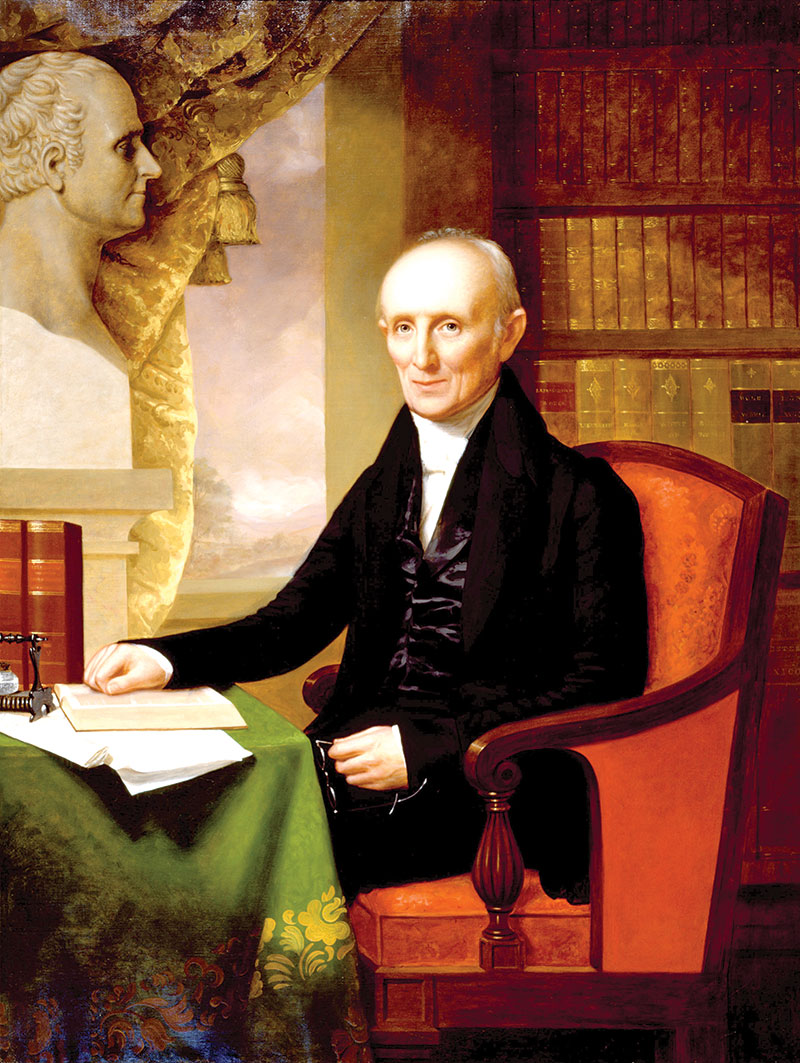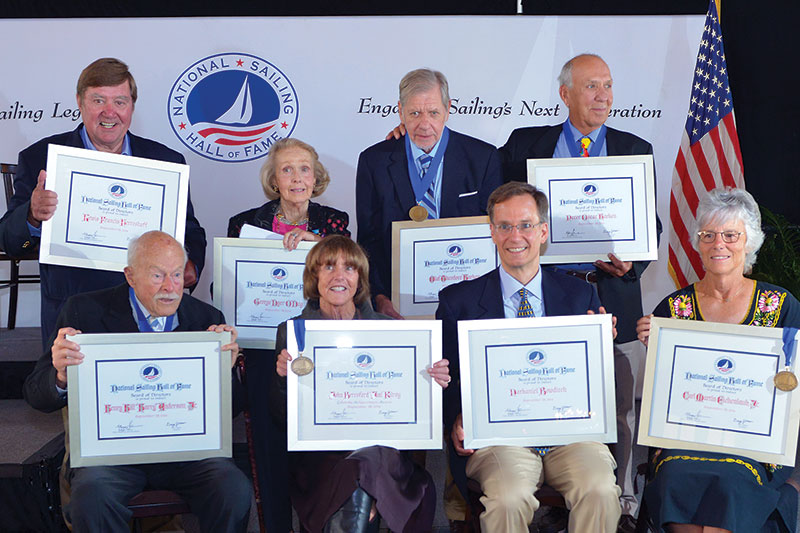The Great Navigator
Nathaniel Bowditch didn’t look like Hollywood’s version of a swashbuckling sailor, but his contributions to maritime navigation more than 200 years ago made it possible to traverse oceans with greater speed and accuracy. And the mathematician’s hard-earned accomplishments haven’t been forgotten. The National Sailing Hall of Fame in Annapolis, Maryland, included Bowditch in its 2014 class of eight inductees during a September ceremony at the Detroit Yacht Club in Detroit, Michigan.

Bowditch, a businessman from Salem, Massachusetts, appeared ill-suited for rugged life aboard a sailing ship. Starting in 1795 he served as a ship’s clerk and captain’s writer, and later as shipmaster and part owner of a merchant vessel. During those journeys he found a way to provide sailors with the most accurate navigational information available.
Bowditch discovered critical errors in Englishman John Hamilton Moore’s Practical Navigator, which in the late 1700s was a reference almanac found in nearly every sea captain’s quarters. His identification of those mistakes led to more efficient ocean crossings, for which Bowditch posthumously earned the title “The Great Navigator.”
Bowditch, who eventually trained as an astronomer, was perplexed by Moore’s inaccuracies regarding lunar tables and other important celestial information. He suspected the bad data in Moore’s book was causing ships to veer dramatically off course while crossing the Atlantic, some by as much as 23 miles. For example, he determined Moore at least once neglected to account for a leap year, which threw off the accuracy of the reference tables even further.
In those days, navigators faced lesser challenges sailing north and south of the equator where distance between lines of latitude could be tracked because the span between latitudes remains parallel. Sailing east and west using meridian lines of longitude was another matter. The meridians converged at the Earth’s poles, which caused the space between them to taper. This gave navigators a headache because calculating distances required measuring time, and high-quality chronometers were both expensive and scarce. Without accurate timekeeping devices, navigators had to depend on lunar sightings matched with information contained in nautical almanacs in order to calculate Greenwich time.
Bowditch uncovered more than 8,000 errors in Moore’s almanac, some of which he offered to correct until a publisher in Newburyport, Massachusetts, convinced him to create his own edition and call it the New American Practical Navigator. First published in 1802, Bowditch insisted lunar tables be simplified so that even the ship’s cook could plot a course. Today the reference book is simply known as The Bowditch and is carried aboard every commissioned U.S. Navy ship. More than one million copies of this sailor’s bible are in print.

Joining Bowditch as inductees to the Hall of Fame were yachtsman and historian Henry “Harry” Anderson Jr. of Newport, Rhode Island; boatbuilder and U.S. Olympic boatwright Carl Eichenlaub of San Diego, California; hardware designers Olaf and Peter Harken of Pewaukee, Wisconsin; naval architect and writer L. Francis Herreshoff of Bristol, Rhode Island; 1960 5.5-meter Olympic Gold Medalist and boatbuilder George O’Day of Brookline, Massachusetts; and grand prix yachtsman John B. “Jim” Kilroy of Marina del Rey, California, recipient of the Hall of Fame’s first Lifetime Achievement Award.
“When the National Sailing Hall of Fame was founded in 2005, a central piece of its mission was to focus attention on Americans who had made outstanding contributions to the sport of sailing,” said Hall of Fame President Gary Jobson.

Comments